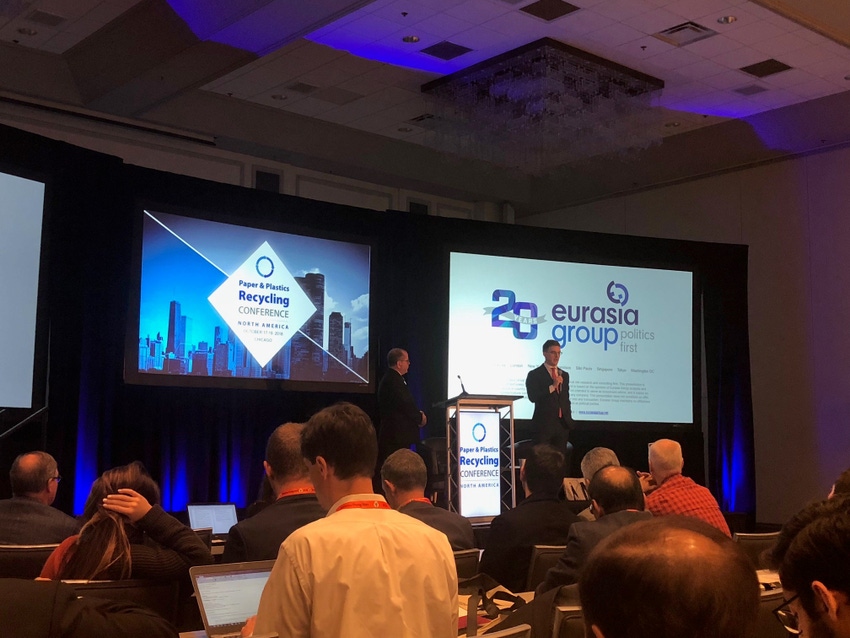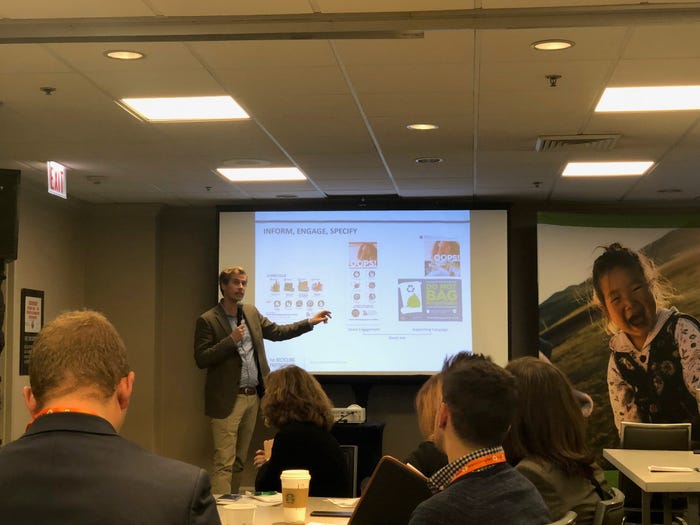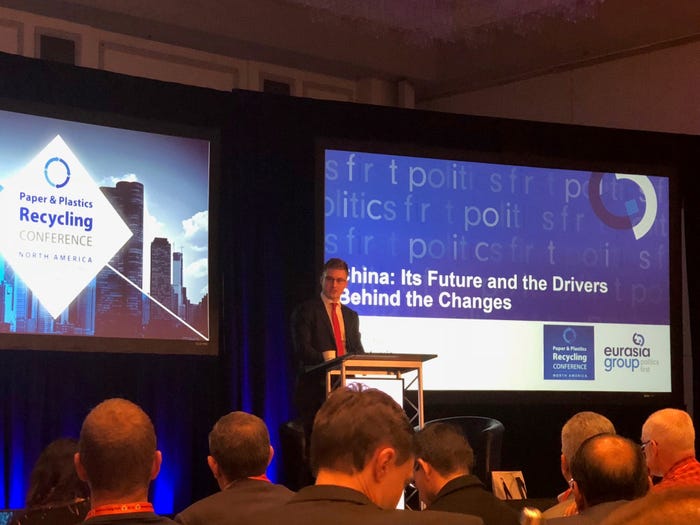The conference, being held this week in Chicago, addresses the biggest challenges and opportunities in the recycling sector.

The Paper & Plastics Recycling Conference, hosted by Recycling Today, is taking place this week in Chicago. The conference features a range of keynote and education sessions that address the biggest challenges and opportunities that currently face recycling businesses, as well as an exhibit hall.
During day one of the show, industry experts discussed stabilizers and additives that are impacting plastics reprocessing, community education and best practices, safety and fire prevention and the drivers behind China’s recent regulatory and economic changes.
Here are some key takeaways from day one. Read highlights from day two here.
Community Education
During the Community Education session, Cody Marshall, Chris Coady and Jill Martin of The Recycling Partnership spoke about the ongoing problem of contamination and how a systematic and targeted approach to cleaning up the inbound residential stream can create value for materials recovery facilities (MRF) operators.
Marshall explained that there are still about 22 million tons of bottles, cans and paper in residences that can be recycled. And in order to get those materials into their proper recycling streams, communities need to be clear with their residents about what can and cannot be recycled.
“There is a book called ‘Switch’ that says, ‘What looks like resistance is often lack of clarity,’ and we really think that relates to how residents are responding to recycling programs,” said Marshall. “There is confusion at the bin, but by using a clear and simple strategy to get the message out to residents, contamination and confusion can be reduced.”

The strategy that The Recycling Partnership is piloting consists of four steps: sending out mailers, tagging carts, sending out top issue mailers and posting top issue signage around communities.
“We have tested this pilot in cities like Chicago and Atlanta, and this strategy has proven effective,” said Marshall. “We hope to pilot this [strategy] in other cities soon to help communities and MRFs reduce contamination and improve communication with their residents.”
This session ended with breakout discussions, which allowed conference attendees to discuss their contamination problems and identify best practices for reducing contamination.
Fire Prevention and Safety
Ryan Fogelman of Fire Rover, Jim Emerson of Starr Technical Risks Agency Inc. and Ron Stearns of Republic Services discussed fire prevention and safety during their session.

Fogelman kicked off the session by sharing the most recent data on industry fires and some of the leading factors that can spark fires, including heat and dry environments, China’s recycling restrictions, lithium-ion batteries, general awareness, hot works (aging equipment) and arson.
Emerson highlighted some fire basics:
Fires start in a "seat" and try to grow vertically. (Heat feedback plays a great role).
Fires that are deeply seated under piles of papers, plastics and/or mixed commodities are one of the most difficult fires to combat.
A deeply seated fire can burn for hours or days.
He also provided ways to take control of fire risk:
Thermal cameras—automatic thermal detection
Pre-wetting foam agent and/or water nozzles
Remote, human-verified, manual control of the foam agent dispenser from a safe location
Configure these for a 180-degree area
Eliminate the fire brigade and focus on the fire service arrival with pre-planning
Assist emergency response for fire professionals’ arrival
Ensure fire professionals can safely enter the facility where the fire department has been trained to arrive
Train employees to start the fire pump and shut off the proper electric circuits
Have a trained bulldozer/loader operator available and consider having more premade “fire lanes” for pile separation
Have a working automatic sprinkler system and adequate water supply
Solidify “human training” programs
Have manually operable roof vents to let heat escape
Establish secondary rally points in a safe place, including offsite
Develop a rapport with the fire department
China’s Future and the Drivers Behind its Changes
In the closing keynote session titled “China: Its Future and the Drivers Behind the Changes,” Andrew Coflan of Eurasia Group’s Asia team spoke about China’s domestic economy and financial system and explored the drivers behind the country’s recent regulatory and economic changes.
“Currently, China is the second largest single country economy, and it has reshaped the global economy in ways we are still trying to understand … China's solution to reducing pollution was to cut off imports of low-quality recyclable goods. If [those materials] are not in the country, they can't pollute the environment,” said Coflan.

Coflan went on to explain that China President Xi Jinping is focusing on addressing three key battles: improving incomes and eliminating poverty, reducing pollution and cleaning up the environment and fighting financial risks.
In addition, he touched on the current trade war between China and the U.S., stating, "What I fear is the trade war not resolving itself and a weakening of the WTO [World Trade Organization]."
With that said, he went on to share ways that foreign firms can help navigate the political cross-currents:
Understand that the environmental cleanup is a long-term effect.
Regardless of the level of engagement, China will remain the center of gravity in international value chains.
Align strategy with Beijing’s own strategic priorities.
Ask the hard questions about what it means to have exposure to China.
About the Author(s)
You May Also Like




